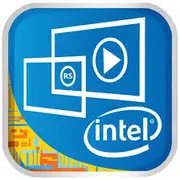Intel Core M-5Y10a

Intel Core M-5Y10a: 초소형 장치를 위한 울트라 모바일 프로세서. 2025년 리뷰
소개
2014-2015년에 출시된 Intel Core M-5Y10a 프로세서는 울트라북과 소형 장치 부문에서 혁신의 일부가 되었습니다. 10년이 지난 지금도 기본 작업에 충분한 성능을 제공하면서 에너지 효율성 간의 균형을 유지하고 있습니다. 2025년에 이 칩이 여전히 유효한지, 그리고 어떤 사람들에게 적합한지 살펴보겠습니다.
1. 아키텍처 및 공정: Broadwell의 세부 사항
Core M-5Y10a는 Broadwell 세대(5세대 Intel Core)에 속하며, 14nm 공정으로 제조되었습니다. 이것은 22nm Haswell에서의 첫 번째 단계로, 성능 저하 없이 전력 소비를 줄일 수 있었습니다.
주요 사양:
- 코어 및 스레드: 2 코어, 4 스레드 (Hyper-Threading).
- 클록 속도: 기본 0.8GHz, Turbo Boost 최대 2GHz.
- 그래픽: Intel HD Graphics 5300 (24 EU, 최대 800MHz).
- 캐시: 4MB L3.
아키텍처 특징:
- Broadwell 마이크로아키텍처: Haswell에 비해 IPC(클럭당 명령어 수)가 5-10% 향상되었습니다.
- HD 5300 그래픽 가속기: DirectX 11.2 지원, DisplayPort를 통한 4K 출력, H.265 하드웨어 디코딩.
- 패시브 냉각: TDP 4.5W 덕분에 팬 없는 장치에서 자주 사용됩니다.
2. TDP 4.5W: 에너지 효율성의 우선 순위
TDP (Thermal Design Power)는 Core M-5Y10a의 핵심 특징으로, 4.5W에 달합니다. 비교하자면:
- Intel U 시리즈 프로세서 (예: Core i5-5200U)의 TDP는 15W입니다.
- 최신 Intel Alder Lake-U (2023-2025)의 TDP는 9-15W입니다.
이로 인해 얻는 이점은?
- 무소음: 쿨러가 없어 소음과 두께가 줄어듭니다.
- 열 안정성: 부하가 걸리더라도 온도가 60-70°C를 초과하는 경우가 드뭅니다.
- 유연성: 제조사는 두께가 10mm 이하인 장치를 만들 수 있습니다.
3. 성능: 실제 시나리오
사무 작업:
- 문서 작업, 브라우저 (10개 이상의 탭), Zoom — 프로세서는 잘 처리하지만, 활발한 멀티태스킹 시에는 지연이 발생할 수 있습니다.
멀티미디어:
- 4K@30fps (H.265) 영상 시청 — iGPU의 디코더 덕분에 문제가 없습니다.
- 비디오 편집: 1080p의 단순한 프로젝트만 가능 (예: Shotcut). 4K 렌더링은 몇 시간이 걸립니다.
게임:
- CS:GO — 720p, 낮은 설정, 25-35 FPS.
- Minecraft — 30-40 FPS (쉐이더 없음).
- 최신 게임 (2023-2025): 권장하지 않음.
Turbo Boost:
최대 2GHz의 클록 속도는 10-20초 동안 활성화되며, 이후 TDP 제한으로 인해 1.2-1.5GHz로 감소합니다. 짧은 작업 (애플리케이션 개방 등)에는 유용하지만, 긴 부하에는 비효율적입니다.
4. 사용 시나리오: 누가 적합한가?
- 학생: 텍스트 작업, 온라인 강의, 간단한 프레젠테이션.
- 사무원: 이메일, Excel, 브라우저.
- 여행자: 7-9시간의 배터리 수명을 가진 컴팩트한 2-in-1 (예: Lenovo Yoga 3 Pro).
- 홈 미디어 센터: HDMI를 통해 TV에 연결하여 스트리밍.
부적합:
- 게임 사용자, 엔지니어 (CAD), 비디오 편집자.
5. 배터리 수명: TDP가 배터리에 미치는 영향
Core M-5Y10a를 장착한 노트북은 30-40Wh의 배터리를 장착하여:
- 문서 작업 시 8-10시간 (밝기 50% 기준).
- 비디오 시청 시 5-6시간.
전력 절약 기술:
- Intel SpeedStep: 동적 클록 변동.
- C 상태: 사용되지 않는 구성 요소 비활성화.
- 패널 셀프 리프레시: 정적 이미지에서 GPU의 부하 감소.
6. 경쟁 제품과의 비교
2015년 AMD:
- A6-8500P (15W, 2 코어): 더 높은 성능을 제공하지만 TDP는 15W로 배터리 수명은 줄어듭니다.
애플:
- MacBook 12" 2015 (Core M-5Y51): 5Y10a의 유사 모델이지만, macOS 최적화로 1-2시간 더 배터리 수명이 길어집니다.
2025년 Intel:
- Intel Core Ultra 5 134U (10W, 2P+8E 코어): 유사한 TDP에서 3-4배 높은 성능.
결론: Core M-5Y10a는 현대 ARM 칩 (Apple M3, Snapdragon X Elite)과 Intel의 하이브리드 프로세서에 비해 기본 작업에도 유효하지 않게 되었습니다.
7. 장단점
강점:
- 극도로 낮은 발열.
- 4K 출력 및 H.265 지원.
- Windows 10/11 및 Linux와의 호환성.
약점:
- 멀티태스킹에서 낮은 성능.
- 장시간 부하에서는 비효율적인 터보 모드.
- 구식 플랫폼: DDR3L, PCIe 2.0.
8. 2025년 노트북 선택 추천
2025년에 Core M-5Y10a 장착 장치:
중고 시장에서만 찾아볼 수 있으며 (가격: $150-250), 새로운 대안은 Intel N 시리즈 장착 노트북입니다 (예: Acer Swift 1, $400-500).
주목해야 할 사항:
- 장치 유형: 울트라북 또는 변환형 (예: ASUS ZenBook Flip).
- 화면: 최소 Full HD 해상도의 IPS 패널.
- 스토리지: 반드시 SSD (256GB 이상).
- 포트: 충전을 지원하는 USB-C.
조언: 예산이 $600 이하라면 Intel Core i3-N305 (8코어, 15W) 또는 AMD Ryzen 3 7320U가 장착된 노트북을 선택하는 것이 좋습니다.
9. 최종 결론
2025년에 Core M-5Y10a는:
- 누구에게 적합한가: 텍스트 및 인터넷 작업을 위한 저렴한 노트북을 원하는 사용자.
- 대안: 중고 MacBook Air M1 ($300-400) 또는 새로운 저가형 Chromebook.
- 주요 장점: 무소음, 콤팩트한 디자인, 기본 작업에 충분한 성능.
마무리: $200 이상 지출할 의사가 없다면 Core M-5Y10a는 아직 유용할 수 있습니다. 그러나 2025년에 편안하게 작업하기 위해서는 더 현대적인 솔루션을 고려하는 것이 좋습니다.
기초적인
CPU 사양
메모리 사양
GPU 사양
여러 가지 잡다한
벤치마크
다른 CPU와 비교
소셜 미디어에서 공유하기
또는 링크로 소개하기
<a href="https://cputronic.com/ko/cpu/intel-core-m-5y10a" target="_blank">Intel Core M-5Y10a</a>